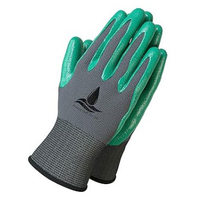7 colorful flowers to plant in April for a vibrant summer garden
These species will add color and texture to your yard
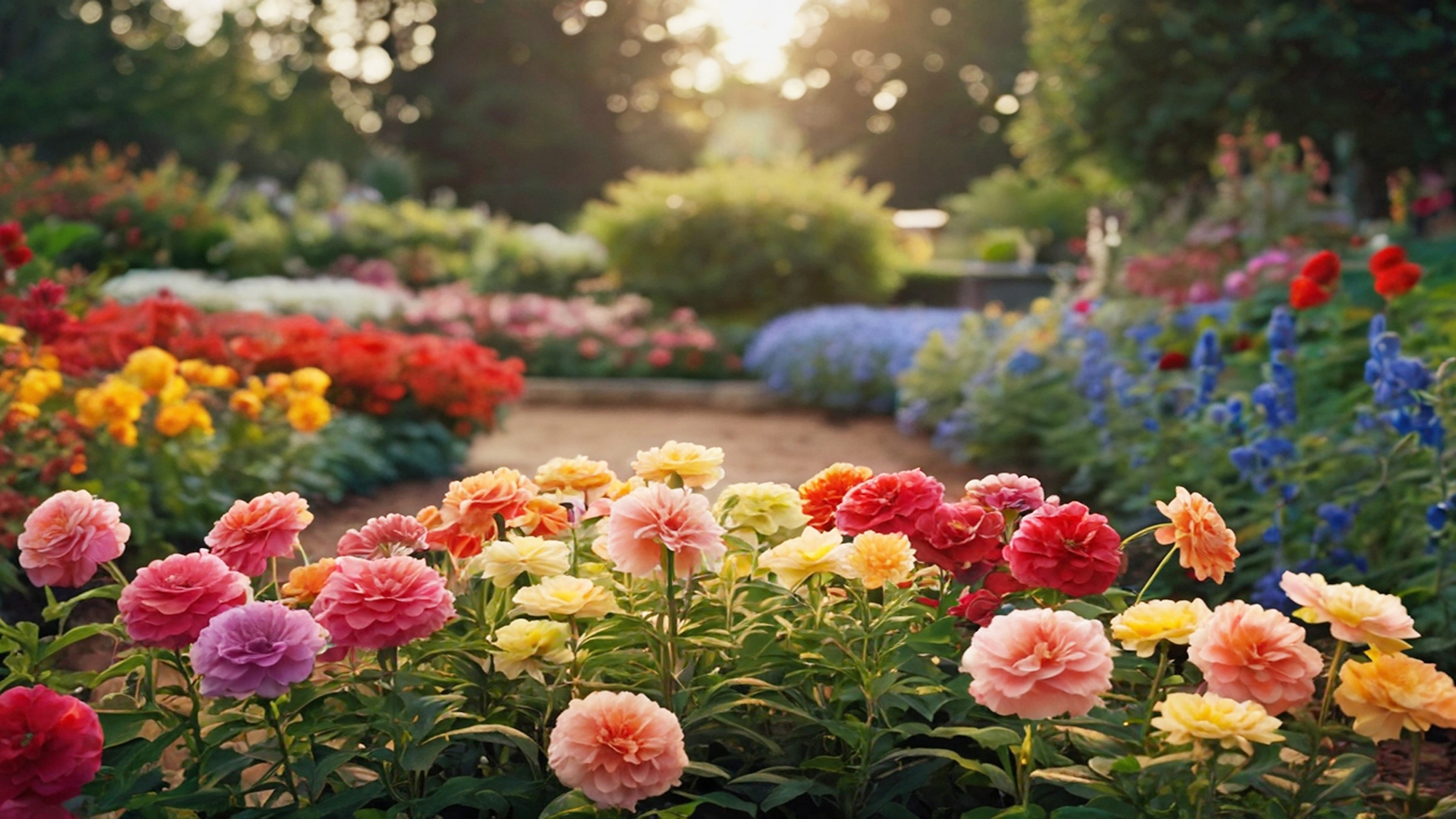
Every season comes with its own gardening highs and lows, but summer is a particularly joyous time to have a flower garden.
It’s the time of year when so many varieties are flowering at once, so you’re able to enjoy a riotous mix of color, shape, and texture. Of course, these displays don’t just appear overnight; you need to start prepping your yard now if you’re going to be rewarded with that vibrant, floral flourish come June and July.
Fortunately, there are many species you can introduce to your garden in April that will be ready to put on a show in just a couple of months.
Here are 7 different annual flowers that will provide vibrancy to your summer garden. You might love them so much, you plant them every year.
How to choose the right flowers for your yard
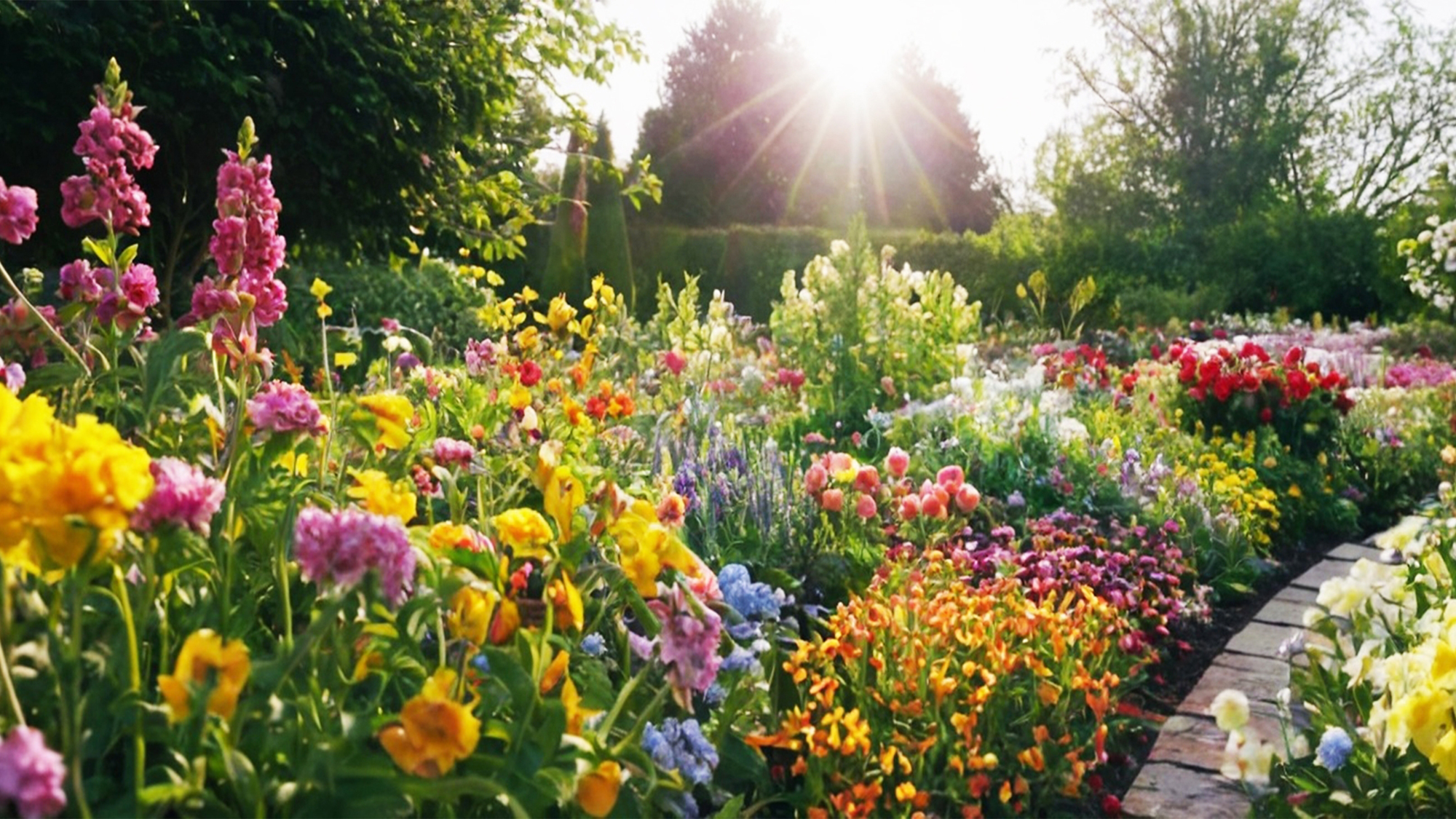
When deciding what plants to include in your garden, there are a few key considerations. First, it’s critical to filter by which plants will thrive in your specific conditions, both in terms of weather and soil type.
Next, you’ll want to assess which plants are already at root in the garden and therefore which species will complement them. Many gardeners like to incorporate a mix of heights and textures to create visual interest.
In terms of color, you may want to stick to one color scheme or color family – or you may want to embrace the rainbow.
Sign up to get the BEST of Tom's Guide direct to your inbox.
Get instant access to breaking news, the hottest reviews, great deals and helpful tips.
Many gardeners like to incorporate a mix of heights and textures to create visual interest
You can also choose between perennial or annual plants. Perennials can be good for consistency, as they have a longer lifespan and will flower again next year, but annuals are a great way to change things up year to year.
If you aren’t sure whether a plant will thrive in your garden, an annual is a lower risk investment and a good way to experiment.
1. Snapdragons
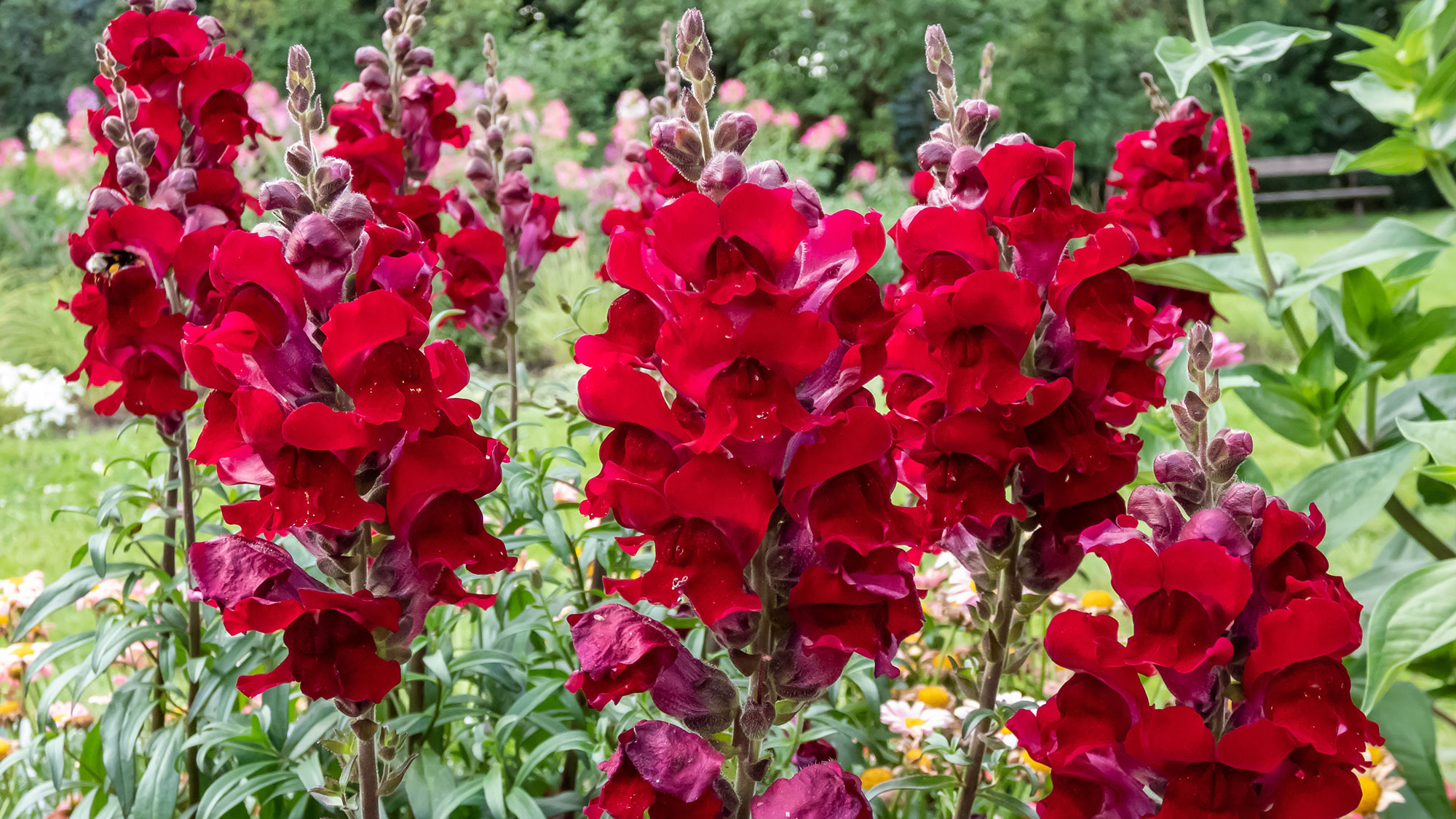
Visually exciting both from a distance and up close, snapdragons are an easy way to add both color and dimension to your garden. Characterized by long spikes of mostly monochromatic flowers, this plant comes in several different shades and can therefore suit various color schemes.
The individual blooms have a unique folded shape that helped earn them their name; some people liken them to a dragon’s mouth opening and closing. Yet despite the exotic name, snapdragons are hardy plants that are great for gardeners at all levels of experience.
They prefer well-draining soil and full sun, but can withstand cold temperatures and are generally quite hardy. Sow seeds directly outdoors and keep the soil moist, but not waterlogged.
You can expect blooms in 60-90 days; deadhead old blooms to promote continuous flowering.
These garden gloves are made of nylon and nitrile and come in three sizes — small, medium and large. They offer excellent non-slip properties, are comfortable around the wrist, breathable and machine washable. At Tom's Guide, we recommend them as the best overall gardening glove.
2. Chrysanthemums
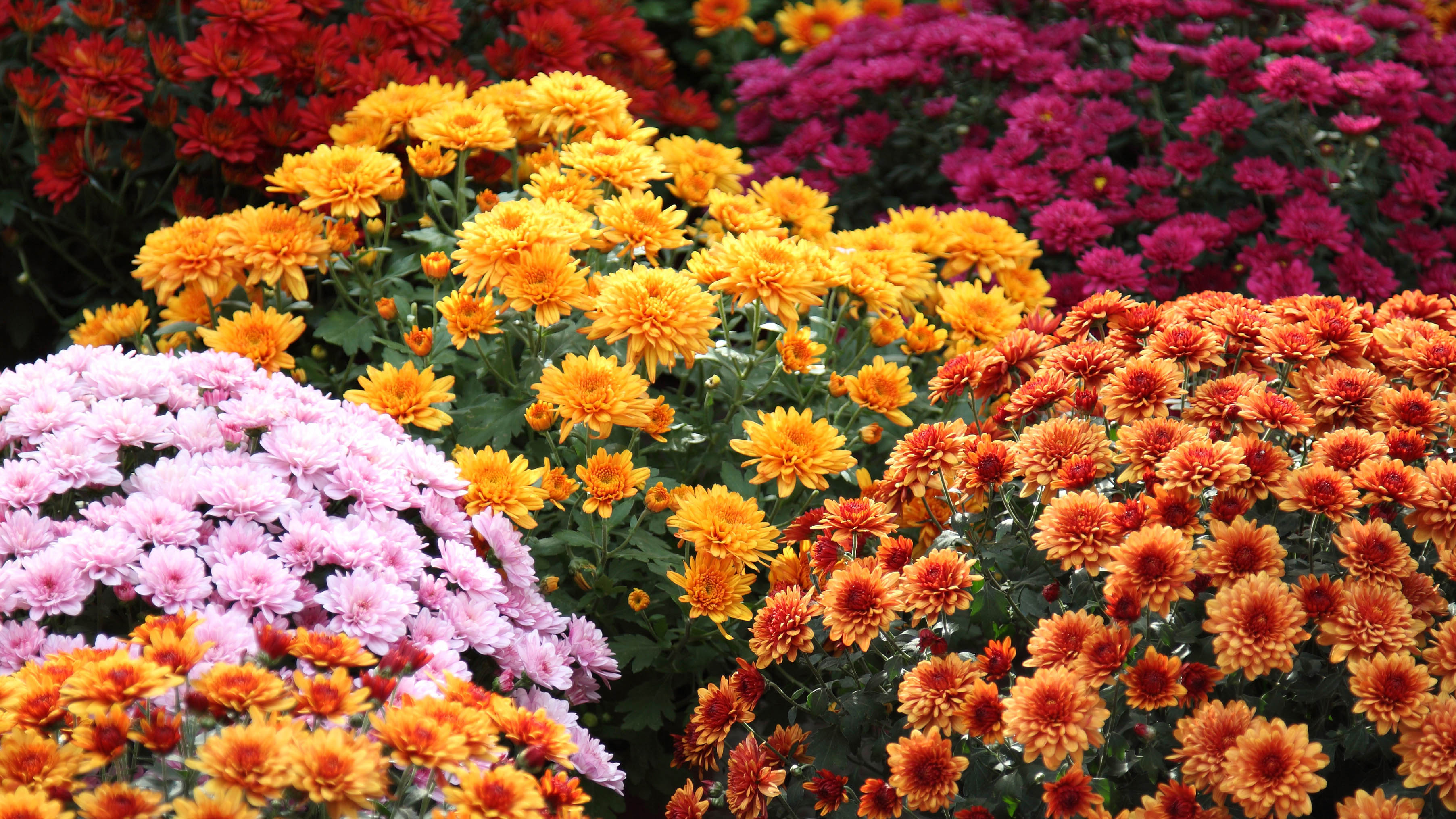
Colder climate gardeners may want to sow their seeds indoors in April, to transplant in May when the weather is more consistently warm
Chrysanthemums come in both annual and perennial varieties, but annuals are perfect for a pop of summer color as the blooms are brighter, with smaller foliage.
The flowers are known for their mass of densely packed petals that slowly unfurl to reveal layers of pretty color. They come in saturated warmer hues and if you live in southern regions, you may even get to enjoy two rounds of blooms in late spring and fall.
In general, they grow to about 3 feet in width and height, so they are a great choice to round out a planting scheme or border without taking over the whole bed.
To plant, wait until the last frosts have passed and then direct sow the seeds into well-prepared soil.
Colder climate gardeners may want to sow their seeds indoors in April, to transplant in May when the weather is more consistently warm.
3. Nasturtiums

If you’re searching for flowers with dual purpose, nasturtiums are a great choice: Not only are they pretty to look at, but you can eat both the flowers and the leaves.
This plant is known for its brightly colored blooms, often in striking shades of orange and yellow, which feature a few wide petals around a small center. Some types, like the Alaska Series, feature multiple colors in a single dwarf variety. Leaves are wide and rounded, creating an attractive and soft effect.
This flower can be used for companion planting to help keep pests away from other plants in the garden
Even better, this flower can be used for companion planting to help keep pests away from other plants in the garden. Nasturtiums grow quickly and can be planted outdoors as soon as the soil temperature reaches 68 degrees Fahrenheit.
You can also begin the seeds indoors if your April temperatures are a bit colder, which some gardeners prefer as it gives better pest protection to delicate young shoots.
Some species will reach up to 10 feet tall, while varieties are more contained. While nasturtiums can thrive in poorer soils, they do prefer full sunlight in order to flower fully; partial shade won’t kill the plant, but will result in fewer blooms.
4. Zinnias
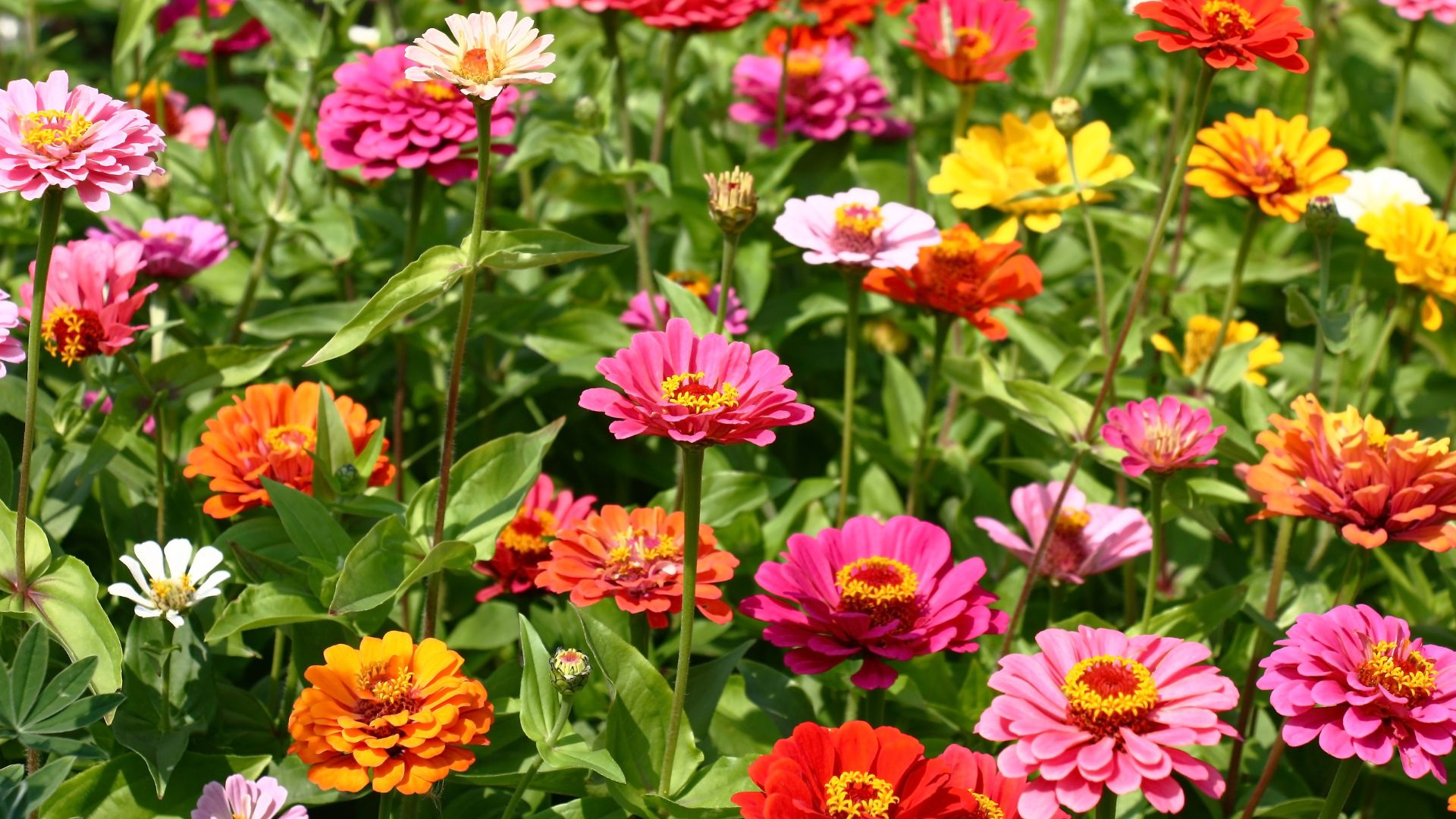
Zinnias are a vibrant addition to any garden, with their long stalks topped by a small profusion of colorful petals. They look quite similar to daisies, except they come in vivid hues like fuschia, coral and crimson.
They are available in single, double, and semi-double flowered varieties, which refers to the number of petals they have and the corresponding visibility of their centers.
Zinnias can be enjoyed both in the soil bed and then as cut flowers in a vase, since they have minimal foliage. They also attract butterflies and so are suitable choices for any butterfly gardens.
While they do self-seed at the end of the season, this is an annual species that won’t grow back next year.
To plant, sow seeds directly into the garden after the last frost has passed; they should grow quickly if in the right conditions. Zinnias prefer to be watered deeply but less frequently, so that the soil can dry out a bit in between waterings.
They are heat-tolerant but may need staking to support their growth, since they are quite a leggy plant.
5. Marigolds
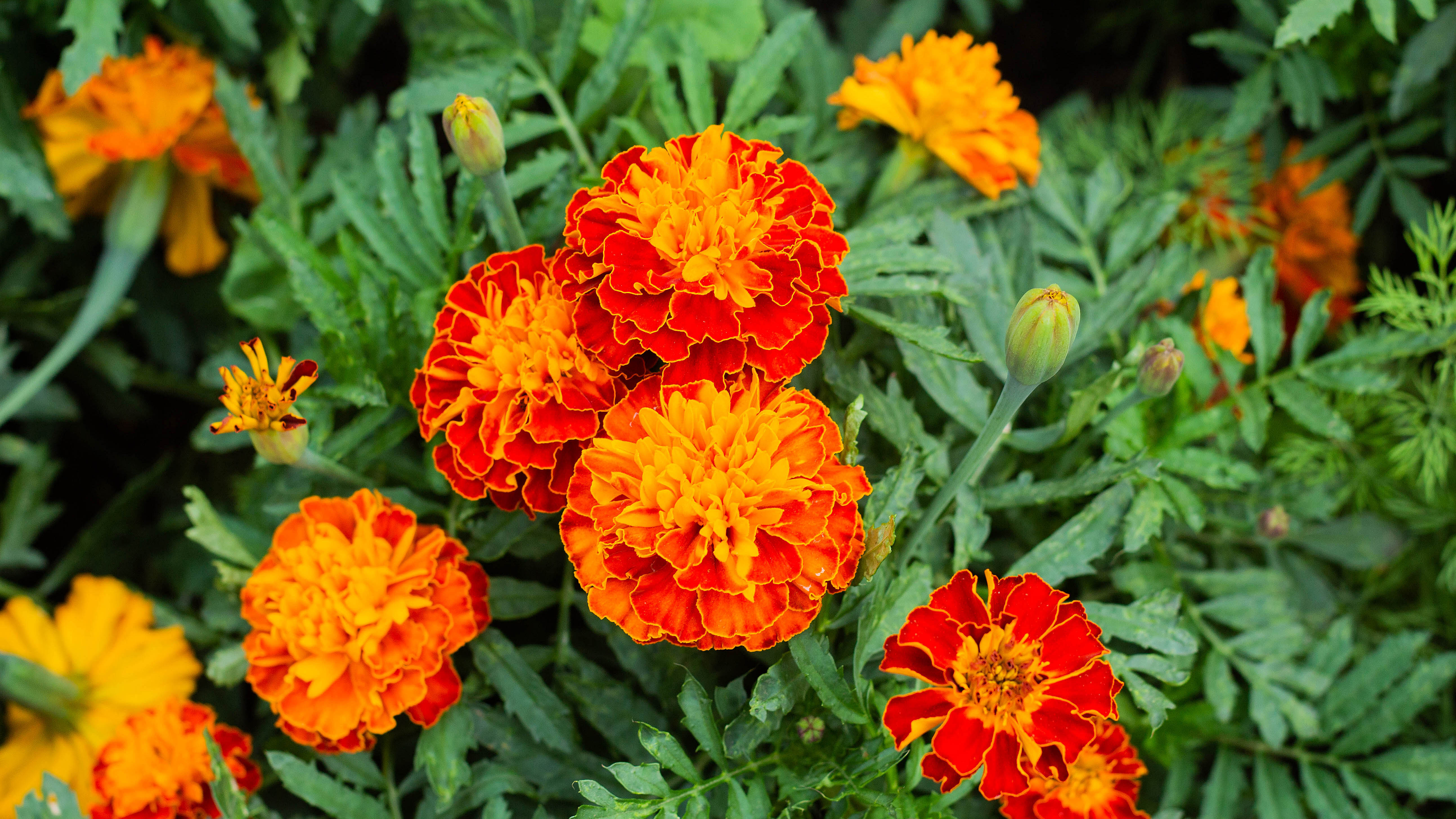
Similar to nasturtiums in that they provide both color and sustenance, marigolds are a beloved flower that have an entire color named after them: marigold yellow. In fact, marigolds also come in shades of orange and red, but they are most recognized in their rich golden yellow variety.
The blooms are large and rounded, with several layers of saturated petals that create a substantial crown on the top of deep green foliage. Not only do they attract people, but also popular summer pollinators like bees and butterflies.
If you’re also growing tomatoes, marigolds make for a great companion plant
Easy and fast to grow, marigolds are often recommended for beginner gardeners or even for planting with children. Marigolds are quite drought-tolerant and enjoy a lot of sunshine, but you can begin planting them a couple of weeks after your last frost.
If you’re also growing tomatoes, marigolds make for a great companion plant as their scent deters tomato pests like the whitefly.
After sowing, you can expect flowers between 50 and 90 days later.
6. Pansies
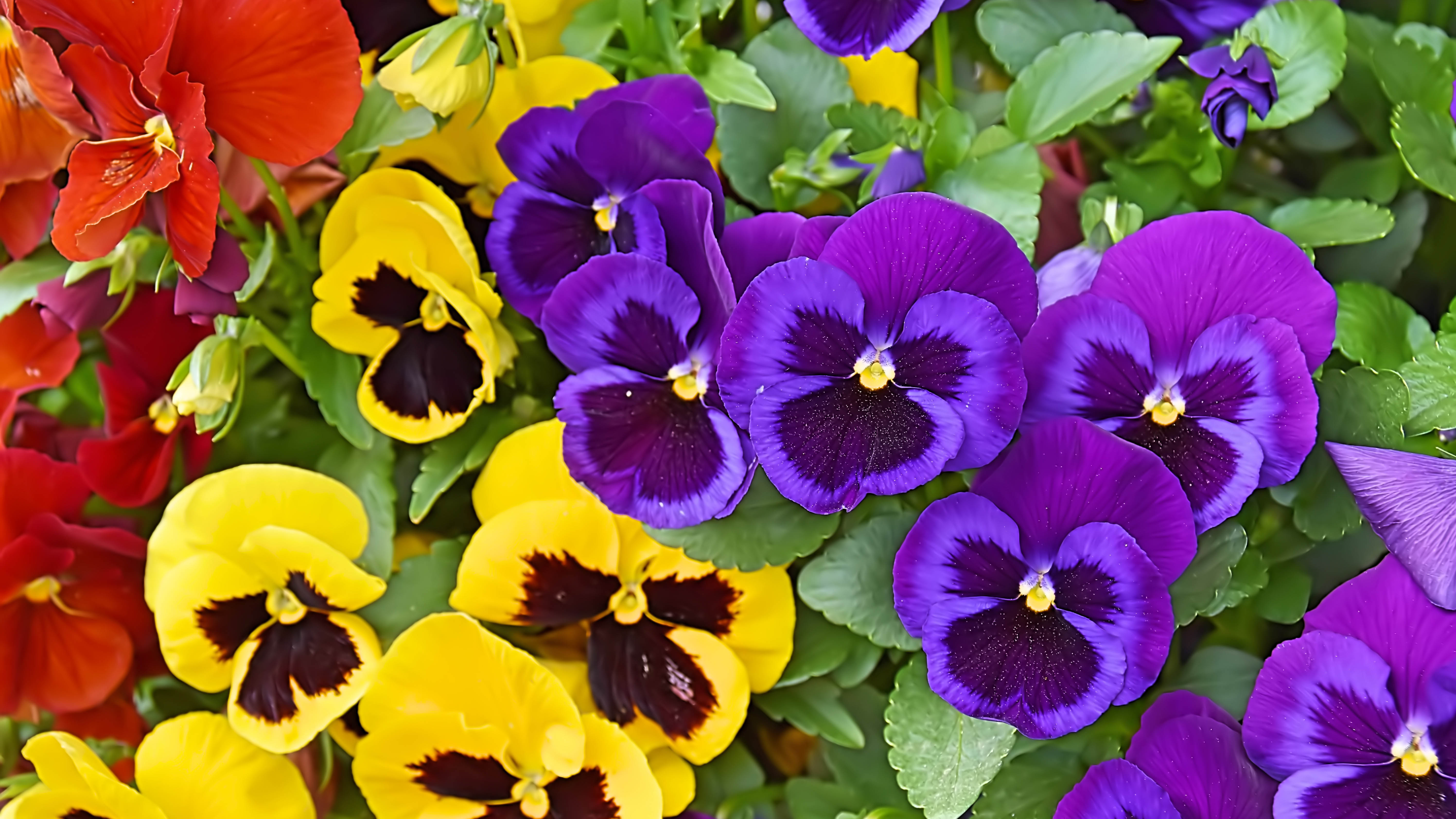
Pansies have a very signature look that people often describe as looking like a face; children might recognize them from the film of Alice in Wonderland.
Their brightly colored petals and contrasting centers make for a fun and whimsical garden flower, while their smaller height can provide balance to larger varieties. Some species even come in multicolored shades that are especially vibrant and eye-catching. In addition to the small upright types, can also find varieties that grow on trailing vines, which can be draped across trellises or walls.
Pansies flower earlier than many other summer plants, which means you can enjoy them earlier - and longer. To help them thrive, sow the seeds in well-draining soil in areas with partial sunlight.
They are quite low maintenance and can handle a cold snap, but the leaves might temporarily discolor if exposed to freezing temperatures.
To promote more flowering, deadhead the blooms once they have finished their life cycle.
7. African Daisies

Unlike their classic white-and-yellow counterparts, African daisies come in a range of vivid colors and can grow as large as 3 feet tall.
While there are several pretty colors available, perhaps the most original variety is the Whirlygig style of African daisy, which has spoon-like petals that create an almost alien-like effect. This flower is especially playful and pretty, adding extra dimension and originality to any summer garden, but all of the varieties will add vibrancy in as little as 2 months after planting.
To grow African daisies, you’ll want to choose a spot with full sun that will encourage the maximum number of flowers to bloom. This plant prefers fairly moist, rich soil but is drought-tolerant, so err on the side of underwatering if you’re not sure.
If you plant in April, you should be able to enjoy flowers in late spring and then again in late summer.
Many gardeners like to sow seeds directly into a container indoors before transplanting into the garden, to ensure the younger plant will thrive in the outdoor environment.
More from Tom's Guide
Madeleine Streets is a writer and content manager based in New York City. She covers an eclectic mix of lifestyle, technology, finance and health and has been published in Tom's Guide, Women's Wear Daily, SELF, Observer, Footwear News and others. Originally from London, Madeleine has a penchant for tea, baking and moody weather. When she’s not writing, you can find her exploring the city’s bookstores, hunting down new restaurants, fostering cats and cheering on Arsenal FC.
You must confirm your public display name before commenting
Please logout and then login again, you will then be prompted to enter your display name.
